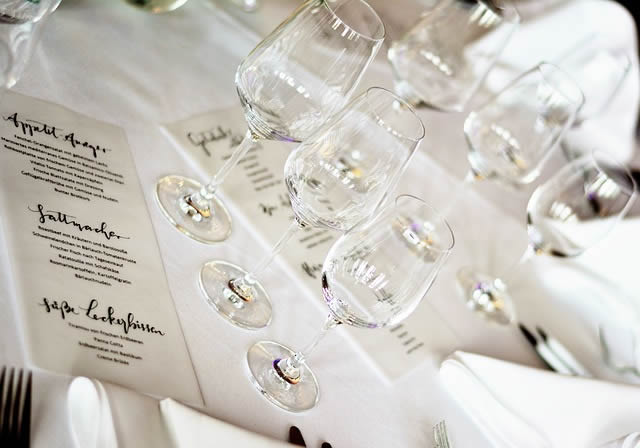今日から「The secret tricks hidden inside restaurant menus -「レストランのメニューに隠された秘密の仕掛け」を読んでいます。

With a theatrical flourish, a sombre, leather-bound document is placed in front of you.
芝居がかった仰々しさと共に、目の前に渋い革張りの書類が置かれる。
flourish「繁盛する、盛大である、活躍する、在世する、腕を派手に振り回す、仰々しい身ぶりをする」。
sombre「渋い、物憂げな、地味な、暗い」。
Inside, the pages bear a tight italicised script and your eyes are drawn to a couple of items that are embellished with flamboyant descriptions.
中にはイタリック体のきっちりした文字が書かれており、派手な装飾が施された項目に目を奪われる。
embellish「飾る、彩る、美化する、化粧・修飾・装飾する」。
Then you turn to the waiter and order.
そして、あなたはウェイターに注文する。
Hopefully a delicious meal is now on its way, but what led you to choose the food you did?
美味しい料理が運ばれて来ることを願うが、何故あなたはその料理を選んだのだろう?
Was it simply because you liked the sound of the steak dish you picked or did something else influence your decision?
選んだステーキ料理の響きが気に入っただけなのか、それとも何か他の要因が?
You may not realise it, but the menu probably played a far greater role than you’d credit.
実はメニューが果たす役割は、あなたの想像以上に大きいかもしれない。
Far from being glorified pricelists, restaurant menus are sophisticated marketing tools that can nudge customers towards certain choices.
レストランのメニューは、単に飾り立てた価格表ではなく、お客の選択を促すための高度なマーケティングツールなのだ。
glorify「栄光をたたえる、賛美する、称賛する、栄光を与える、名誉を与える、実際以上に美しく見せる」。
Restaurant menus can even tell us what to think.
レストランのメニューは、私たちに何を考えるべきかを教えてくれる。
“Even the binding around the menu is passing us important messages about the kind of experience we are about to have,” explains Charles Spence, a professor in experimental psychology and multisensory perception at the University of Oxford.
「メニューの装丁にも、これから体験することについての重要なメッセージが込められています」と話すのは、オックスフォード大学で実験心理学と多感覚知覚を研究するチャールズ・スペンス教授。
“There are a lot of elements on a menu that can be changed to nudge the customer in one way or another.”
「メニューには、お客の気持ちをあれこれと動かす要素がたくさんあるのです。」
よく聞くのが、メニューに松竹梅(価格の高・中・低)を設定すると、多くのお客が竹(中価格)を選ぶので、お店側は竹を一番利益が高いように組むという話。
これをしているお店は結構あるので、有効な戦略ということなんでしょうね。
レストランのメニューも、自分で選んでいるようで実は巧みに誘導されている??
どんな仕掛けなのか、早速読んでいきましょう!
理由は単純明快!「少ないコストでしっかり楽しく学べるから」。
私自身の経験(高機能でビックリ)をびっしり書いていますので、良かったら読んでみてください。
下のバナーからどうぞ!






